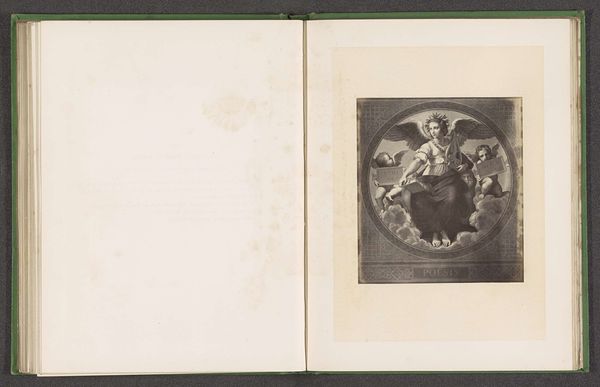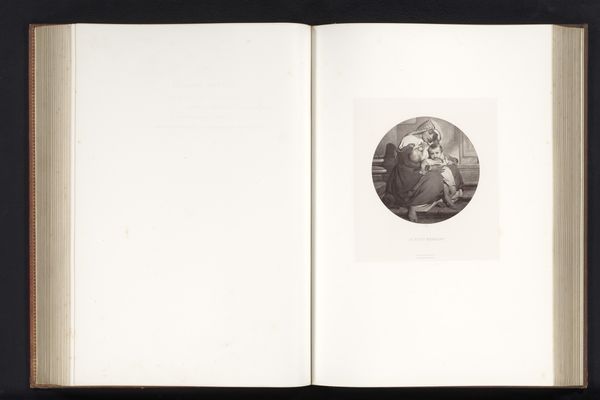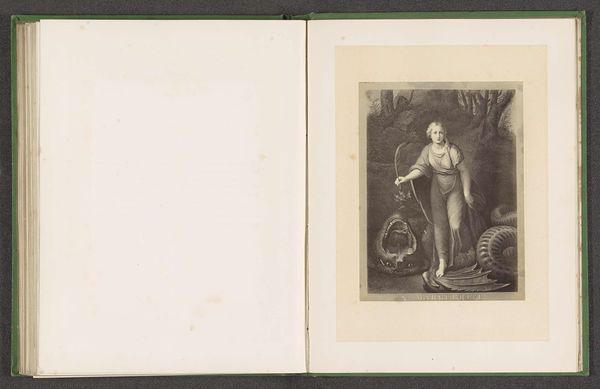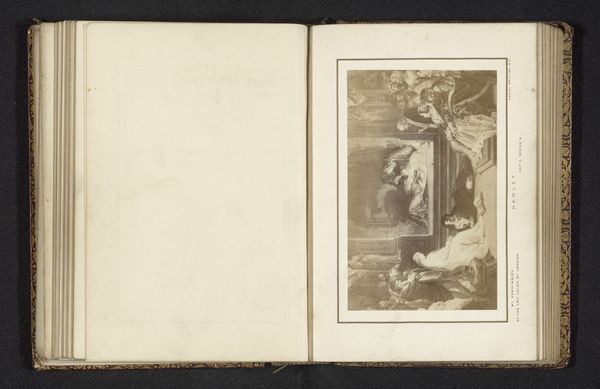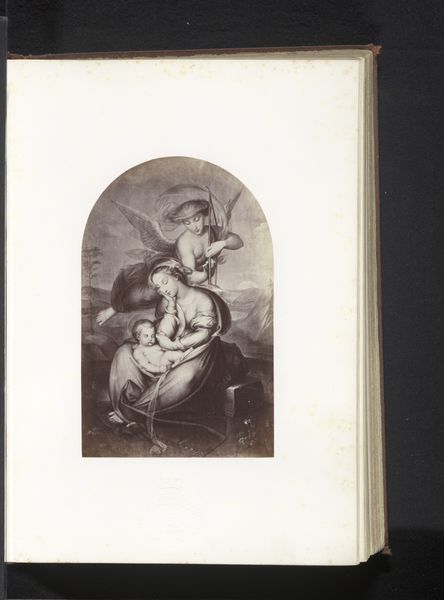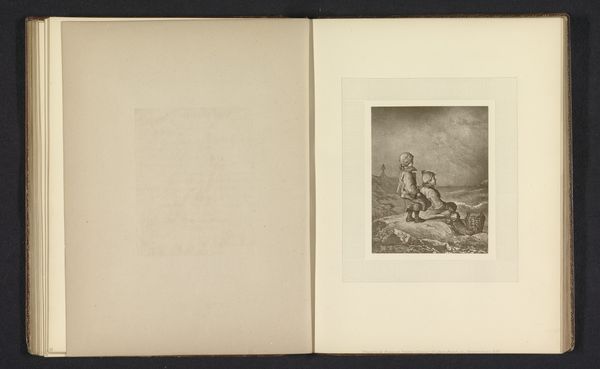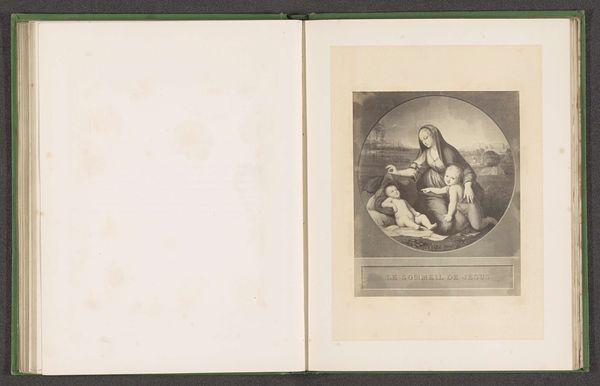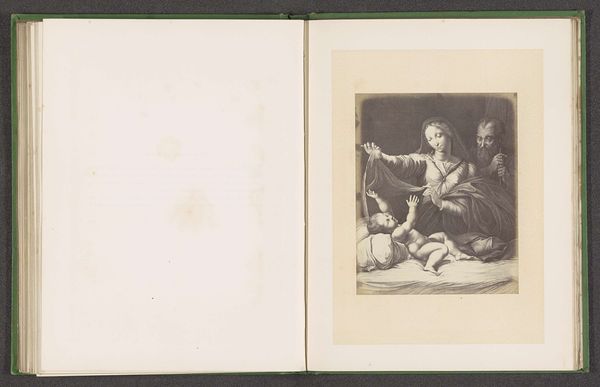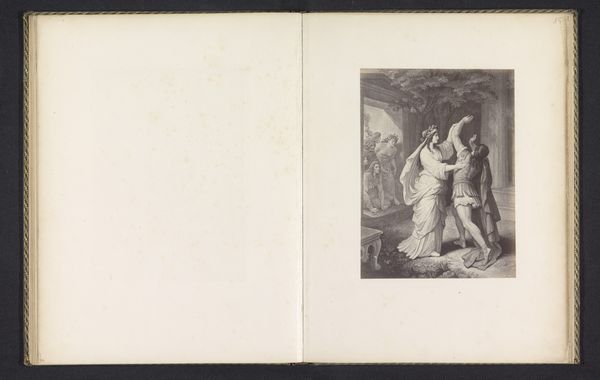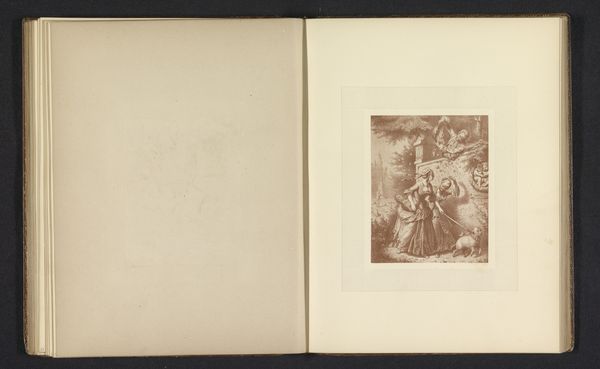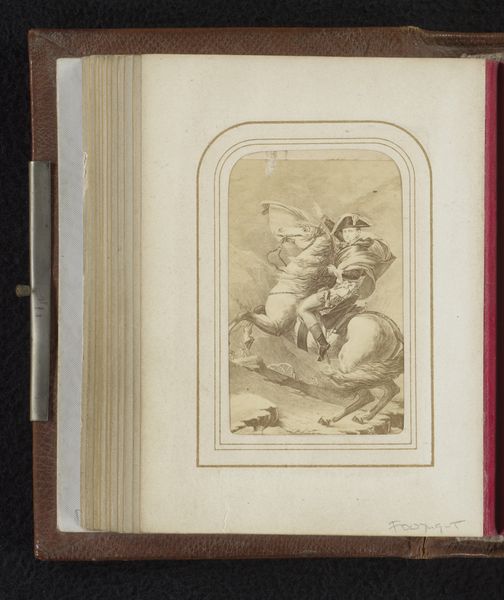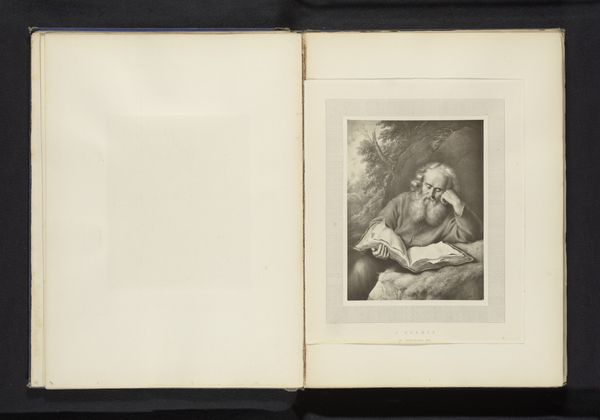
Fotoreproductie van een prent van de allegorie van de theologie in de Stanza della Segnatura door Rafaël before 1869
0:00
0:00
#
aged paper
#
homemade paper
#
ink paper printed
#
sketch book
#
hand drawn type
#
personal sketchbook
#
hand-drawn typeface
#
sketchbook drawing
#
sketchbook art
#
design on paper
Dimensions: height 144 mm, width 129 mm
Copyright: Rijks Museum: Open Domain
Editor: Here we have what seems to be a photo reproduction of a print, made before 1869 by Joseph Cundall. The original artwork is Raphael's allegory of Theology from the Stanza della Segnatura. I'm struck by how meticulously this copy captures the Renaissance style. What can you tell me about the socio-political implications of reproducing such a piece? Curator: That's a keen observation. Consider the power dynamics at play in reproducing a Renaissance masterpiece like Raphael’s "Theology." This photomechanical reproduction democratizes access to art previously enjoyed only by the elite who could visit the Vatican. The proliferation of such images signifies a shift in cultural authority, doesn't it? Instead of papal decree, now the printing press enables the circulation and interpretation of theological ideals. How might this impact established religious or political narratives? Editor: That’s fascinating. So, mass production creates a more accessible narrative, but at the expense of its intended elitist audience. It challenges established social hierarchies. The 'aura' of the original, as Benjamin might argue, is diminished through its reproduction. Curator: Precisely. This kind of reproduction made art a tool for widespread consumption and potentially, social commentary. Consider also, who commissioned and consumed these reproductions. Were they used for educational purposes, as a sign of refined taste, or perhaps even to challenge the Church’s authority in some subtle way? How do you see this influencing art of the later 19th century? Editor: I see the expansion of themes accessible to art but also its commercial exploitation for an eager bourgeois public. It also reminds me that an image never exists in a vacuum. It's constantly reshaped and reinterpreted depending on context and distribution. Curator: Indeed. Understanding how this reproduction circulated, and the intentions behind its dissemination, opens up a richer appreciation of its historical significance. I’ve really enjoyed thinking through the ways an art piece and its reproductions can be utilized in various and sundry ways by various demographics.
Comments
No comments
Be the first to comment and join the conversation on the ultimate creative platform.
